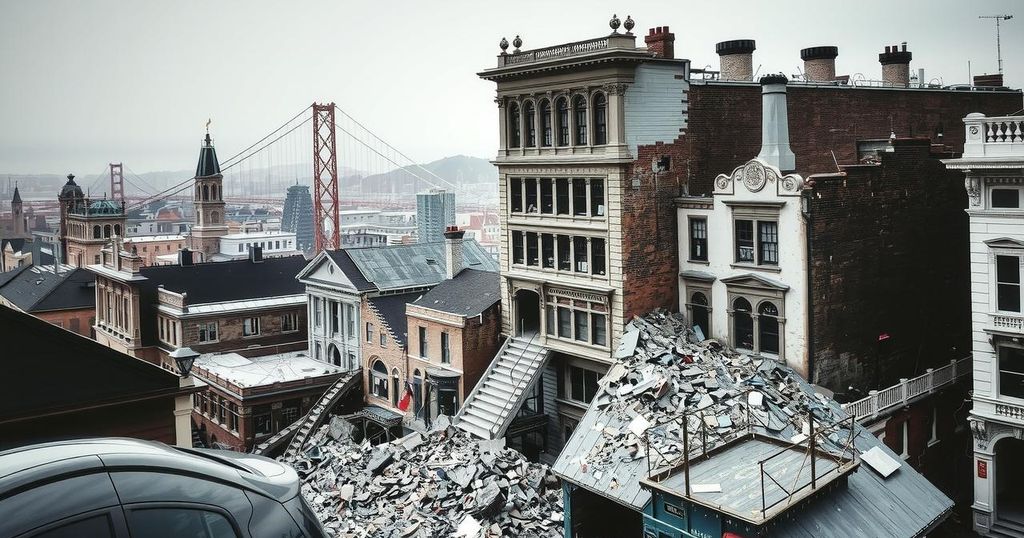The 1906 San Francisco earthquake, measuring 7.9 in magnitude, struck on April 18, devastating the city and surrounding areas. The quake and subsequent fire destroyed thousands of buildings, left over 3,000 people dead, and displaced 250,000 residents. Relief efforts quickly followed, leading to substantial international aid and a concerted rebuilding effort that emphasized earthquake resilience and geologic research into earthquake mechanisms.
On April 18, 1906, an immense earthquake measuring 7.9 in magnitude struck off the northern coast of California at 5:12 a.m., notably affecting San Francisco. Caused by a slip along the San Andreas Fault, the earthquake’s tremors reached as far south as Los Angeles and northward to Coos Bay, Oregon. The devastation was particularly acute in San Francisco and adjacent towns, including San Jose and Santa Rosa, where infrastructure and communities suffered catastrophic damage.
The 1906 event was unprecedented, surpassing prior earthquakes that had affected San Francisco in 1864, 1898, and 1900. Eyewitness accounts describe a deafening noise akin to “the roar of 10,000 lions” as the city shook violently, interrupting daily life. Major infrastructures, including the Palace Hotel and City Hall, were severely compromised, showcasing the city’s vulnerability.
The earthquake ignited a massive fire that ravaged the city for four consecutive days, consuming over 28,000 buildings and rendering approximately 3,000 people dead, with many more left homeless. The inferno obliterated 500 city blocks spanning 4 square miles. While initial estimates placed the death toll at about 700, it is now understood to have far exceeded that number, with 250,000 residents displaced, forced to seek refuge in makeshift camps.
Despite the widespread destruction, relief efforts swiftly mobilized, with shipments of food and clothing arriving from various global sources, including Europe and Asia. Insurance claims mounted to around $300 million, assisting in the lengthy reconstruction process. The rebuilt San Francisco transitioned towards being more resilient to earthquakes, drawing on lessons learned to mitigate future risks. By 1915, the city showcased its revitalization efforts to the world at the Panama-Pacific International Exposition.
Geological investigations following this disaster contributed significantly to the understanding of earthquakes, leading to the development of the elastic rebound theory, which explains the mechanics behind seismic activities, thereby enriching the field of seismology.
The 1906 San Francisco earthquake is one of the most significant seismic events in United States history, representing both a natural disaster and a pivotal moment in urban development. Prior to this event, San Francisco had experienced minor earthquakes, but none inflicted such widespread damage. The earthquake not only caused immediate destruction but also resulted in a major fire that compounded the disaster, making it a case study in emergency response and urban resilience. The aftermath of the earthquake fostered advancements in building codes and urban planning, aimed at better preparing the city for future seismic risks.
In summary, the 1906 San Francisco earthquake stands as a profound historical event, characterized by its devastating magnitude and subsequent destruction. It resulted in substantial loss of life and property, prompting significant relief efforts and international support. The rebuilding process led to the adoption of improved construction standards to enhance earthquake resilience. Furthermore, it contributed to foundational theories in geology, cementing its role in the advancement of seismology and urban planning.
Original Source: www.britannica.com






